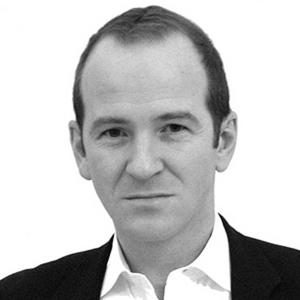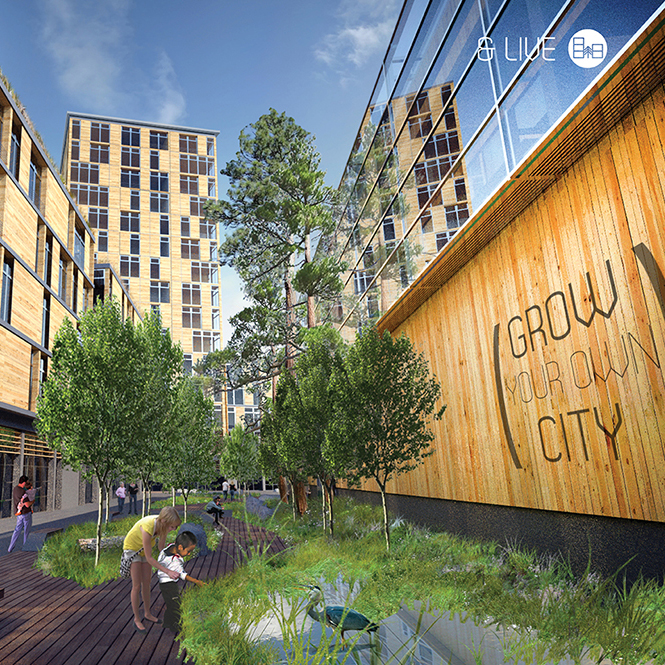Timber in the City 1: Urban Habitat Competition
Timber in the City: Urban Habitats Competition, organized by the Association of Collegiate Schools of Architecture
(ACSA), the Binational Softwood Lumber Council (BSLC) and Parsons School of Design.
The competition challenges participants to design a mid-rise, mixed-use complex with affordable housing units, a job training/educational facility, a center for innovative manufacturing of wood technology, and a distribution center. The project site is in Red Hook, Brooklyn a neighborhood in some flux, cut off from much of Brooklyn geographically, yet increasingly vibrant.
Aspiring to regenerate a dissipating urban manufacturing sector and address the housing needs of New York City, entrants will be asked to design a place for the creation of originative vocational opportunities embracing new wood technology. Entrants will be challenged to propose construction systems in scenarios that draw optimally on the performance characteristics of a variety of wood technologies.
WINNERS
FIRST PLACE __
TITLE
![]() Grow Your Own City
Grow Your Own City
STUDENTS _ Benjamin Bye, Alex Kenton, and Jason Rood
University of Oregon
FACULTY SPONSORS _ Judith Sheine, University of Oregon
Mikhail Gershfeld, Cal Poly Pomona
SECOND PLACE_
TITLE
![]() Cultivating Timber
Cultivating Timber
STUDENTS _ Christopher Gardner,
University of Texas at Austin
FACULTY SPONSORS _ Ulrich Dangel,
University of Texas at Austin
Jurors
 Mark Cruvelier, Cornell University
Mark Cruvelier, Cornell University
Mark Cruvellier’s interests and areas of expertise are broadly concerned with the form, behavior, and conceptual basis of structures set within the context of architecture. At Cornell since 1991, Cruvellier regularly teaches classes that are focused on the study of fundamental structural concepts and basic elements as well as the design of overall structural systems. He is a coauthor of the books The Structural Basis of Architecture, Third EditionOpens an external link(Routledge, 2019; also, 2nd edition, 2011) and Model Perspectives: Structure, Architecture and Culture (Routledge, 2017). Cruvellier served as department chair in the Department of Architecture for 12 years; his most recent term ran through June 2017. Prior to coming to Cornell, Cruvellier worked for several years in New York City on the structural analysis of some of that city’s tallest and most slender buildings, and in Vancouver, British Columbia, on several unusual bridge designs. He earned his Ph.D. at McGill University specializing in the computer modeling of tall buildings.
 Michael Green, Michael Green Architecture
Michael Green, Michael Green Architecture
Michael Green is an award-winning architect known for his research, leadership, and advocacy in promoting the use of wood, new technology and innovation in the built environment. He lectures internationally on the subject, including his TED talk, “Why We Should Build Wooden Skyscrapers.” Based in Vancouver, Canada, Michael founded MGA to create meaningful and sustainable change in building through innovation in construction sciences and design. Michael and his team are ambitiously extending the boundaries of mass timber construction, having completed some of the largest modern timber buildings in the world, including The Wood Innovation Design Centre and T3 Minneapolis. He is also the founder of DBR | Design Build Research and TOE | Timber Online Education, a non-profit school and research platform dedicated to teaching the design and construction of socially, culturally and environmentally relevant student-led installations, with a focus in systemic change in building for climate, environment, disaster and global shelter needs. Michael is a Fellow of the Royal Architectural Institute of Canada and has been honoured with North America’s most prestigious awards, including two RAIC Innovation Awards and three Governor General’s Medals. In 2014, Michael received an honourary doctorate degree from the University of Northern British Columbia. He is the co-author of ‘The Case for Tall Wood Buildings,’ now in its second edition, and ‘Tall Wood Buildings: Design, Construction and Performance.
 Abby Hamlin, Hamlin Venture
Abby Hamlin, Hamlin Venture
Abby Hamlin is a New York City based real estate developer and civic thinker. In 1998, she founded Hamlin Ventures, which today, remains one of a handful of successful woman-owned development companies. Recently, the New York Times credited her eponymous company as the catalyst for a resurgence of townhouse development in Brooklyn, noting that the design of her two projects, 14 Townhouses and 9 Townhouses “set the bar high” for those who followed.Prior to forming Hamlin Ventures Ms. Hamlin was President of Swig Weiler & Arnow Mgt. Co., Inc. a premiere Manhattan-based commercial real estate company that developed, owned and managed 8 million square feet of office properties in New York City and San Francisco, as well as the Fairmont Hotels. Ms. Hamlin was with Swig Weiler & Arnow for almost fifteen years, spearheading a number of large-scale development projects and managing the organization for its private owners. Hamlin has been an adjunct professor of real estate development at the Graduate School of Architecture at Columbia University teaching both core development classes and serving as Director of Curriculum. Ms. Hamlin holds a B.A. from Sarah Lawrence College and a Masters of Urban Planning from Princeton University.
 Alan Organschi, Gray Organschi
Alan Organschi, Gray Organschi
is the design principal and a partner at Gray Organschi Architecture, in New Haven, Connecticut, a firm recognized at the local, regional, and national level for its innovative conception and careful crafting of architectural projects that range from the adaptive re-use of damaged buildings and neighborhoods to the development and implementation of low-impact component assembly systems for ecologically delicate sites. In buildings for both private clients and emergent community institutions, Gray Organschi Architecture has explored the intersection of environmental constraint, social need and available resources to produce architecture that is environmentally sensitive and culturally and physically durable.
 Tricia Stuth, University of Tennesee
Tricia Stuth, University of Tennesee
Tricia Stuth, AIA is an associate professor at the University of Tennessee College of Architecture and Design, a Co-Founder and Partner in the firm curb, and a Co-Founder and Principal in the architectural collaborative Applied Research. Ms. Stuth’s focus on the role of context in design underpins her work in each of these positions. Her dedication to understanding design as intricately influenced by culture and technology, politics and place have allowed her to make significant contributions to the field, including several articles published in the Journal of Architectural Education (JAE). She holds BS and MArch degrees from the UW – Milwaukee and practiced with the Miller|Hull Partnership, Kieran Timberlake Associates and Ellis-Miller Architects. While with these firms, she was a designer on numerous projects including the Island Residence on Bainbridge Island, WA; Sidwell Friends Middle School in Washington DC, AIA COTE Top Ten Green Award winner; the Cambridge Federation of Women’s Institutes, UK RIBA finalist for the Sterling Prize. In 2010, the AIA recognized Ms. Stuth with the Young Architects Award, and the work of her firm curb is recognized by the AIA and RIBA and is exhibited and published nationally and internationally.
 Andrew Waugh, Waugh Thistleton Architects
Andrew Waugh, Waugh Thistleton Architects
Andrew Waugh has been director of Waugh Thistleton Architects for the last 15 years in Shoreditch, London. Waugh Thistleton is an architectural practice producing thoughtful and sustainable projects in its own neighborhood and beyond. The practice is a world leader in engineered timber. Andrew was an early pioneer in the architectural quest for tall timber buildings with the project Murray Grove, a nine-story timber building completed in 2009. Today, his office currently holds the record for the world’s largest cross-laminated timber building, Dalston Works. Waugh Thistleton continues to build internationally in timber and Andrew continues a passionate interest in tall timber construction as the only replenishable carbon-capturing structural building material known to man. With this passion Andrew teaches, learns and lectures on the architecture of wood all over the world.


